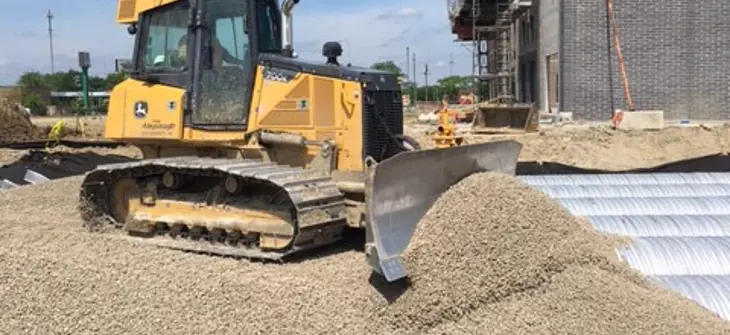
What’s the Difference? Construction Cover vs Post Construction Cover
If you’ve ever been confused about the cover requirements over underground detention systems, you’re not alone. Why do the requirements change during construction vs. post-construction? Let’s break it down.
What is Underground Detention System Cover?
First, let’s start by defining what cover is so that we’re all on the same page. Cover is classified as the minimum amount of backfill/material needed above a detention system to ensure the structural integrity of the detention material. The amount of cover needed for a system is typically determined by the material, the thickness of the material, the loading anticipated atop the system, and the type of backfill material. The total cover required for a system is the combination of the pavement, measured from the bottom of flexible pavement or top of rigid pavement, the granular road base, and the backfill material. Since the minimum cover requirements are affected by anticipated loads, there tend to be different requirements for post-construction and construction loads. Adequate cover is the key to success in both applications
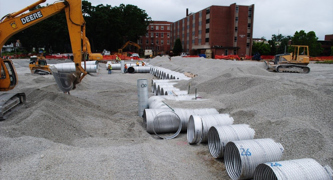
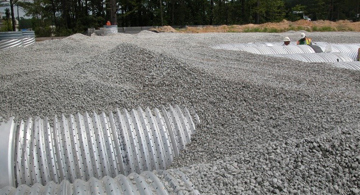
Example of post-construction cover requirements
To better illustrate post-construction cover, I’ve provided our typical CMP detention backfill detail. In a standard application, we assume an H-20 highway live loading. Under these conditions, you have the following backfill requirements consisting of pavement section, granular road base, free draining angular washed stone, granular bedding, and a non-woven geotextile. As you can see, the minimum requirements for cover are dependent on the diameter of the pipe being utilized and the pavement type, either flexible or rigid. The road base can be included in the minimum cover requirements. Assuming all requirements of the detail are met, the pipe will be functioning and protected for post-construction loading.
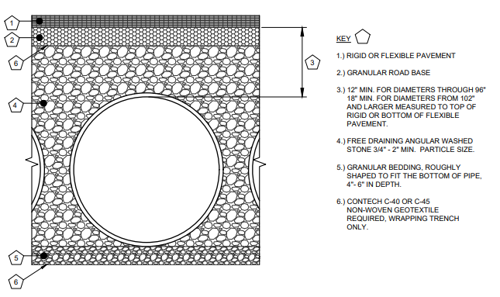
Why are the Cover Requirements Different During Construction?
During the construction period, there tends to be a need for heavy construction equipment to travel over installed underground detention systems during the completion of grading, paving or other site work. Construction loading often exceeds designed highway loading. With larger loads and heavier equipment, this can impose concentrated loads far above those the structure is designed to carry. Hence the need to implement ‘temporary construction cover.' This temporary cover generally exceeds the minimum standards for post-construction cover. While keeping the larger machinery away from the installed system is suggested, that’s not always feasible given site constraints. That’s where we see the implementation of required construction cover to protect the system.
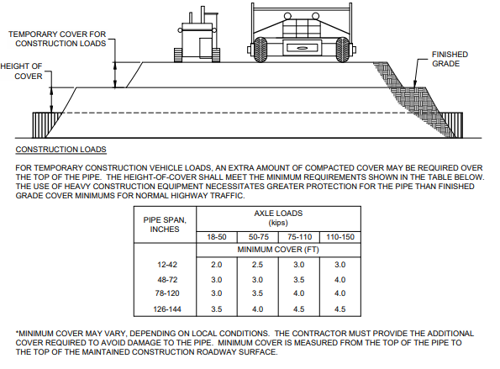
In addition to the heavier loading, paving may also be the last phase of construction. With no pavement or road base, this reduces the cover of the system below the minimum requirement for post-construction cover. If the area atop the system is to be used as a material stockpile location, minimum cover is still a requirement to be met, either with the temporary cover or complete paving.
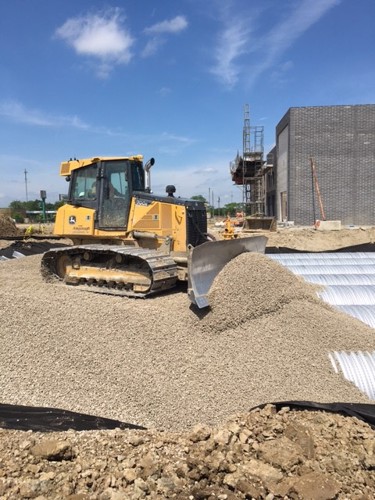
When it comes to evaluating temporary construction cover, the best course of action is to get with your local Contech rep. A pre-construction meeting can help plan the construction/installation phasing, determine the types of equipment that will be used on the job, and answer the question of “What is my construction cover?” These conversations protect site workers, equipment, the underground system and its material integrity, and help to eliminate issues that may arise when it comes to cover and installation.
